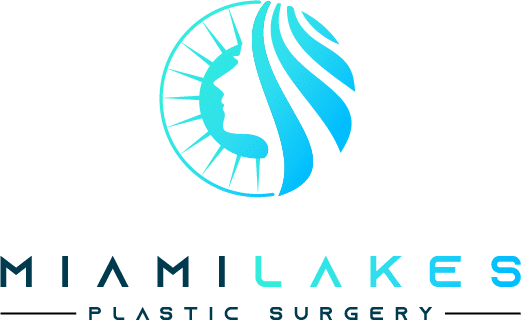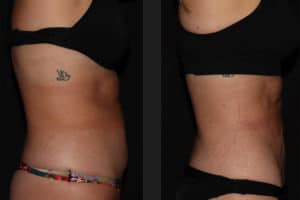Why do I look angry all the time? Part 1
First, let’s assume that it’s not because you are angry all the time, and if that’s not the case then there are several anatomic reasons why you may look upset when you’re feeling just fine.
Let’s break this answer into 2 parts because there are some anatomic features in the upper facial third they can make you look upset or angry or even tired and then there are features in the lower facial third that can have the same effect.
Today we will deal with reasons why features of your upper face can make you look angry or tired.
Later we will look at how the features of your lower face can have this effect.
In terms of the upper facial third, 2 primary structures can make you look angry or tired.
The first is that heavy forehead or brow,
The second is heavy upper or lower eyelids.
Let’s just deal with each of those things separately and look at the relationship between them so that we can figure out what’s going on and the best way to address each of those concerns.
Let’s work from the top down. We’ll begin with the brow or the forehead. Two things can be going on with the brow or forehead that can give you a tired or angry appearance.
The first is extra wrinkling or line formation on the forehead. The other is tissue laxity of the far ahead.
In terms of the lines are wrinkles on the forehead there are 2 kinds of horizontal lines.
The first is static lines. Those are the ones that are there when you’re forehead is at rest.
The other is dynamic lines. Those are the ones that are there when you’re moving your forehead such as when you raise your eyebrows there’s a horizontal line that pops up.
Static lines of the forehead that are present when your brows are at rest can be dealt with things like filler or with resurfacing treatments like laser or chemical peels or radiofrequency micro-needling.
And dynamic lines that are present when your forehead is moving can be nicely addressed with botox which will selectively weaken the muscles under the forehead.
In terms of tissue laxity or lack skin of the forehead that can make your entire upper facial third essentially descend and make your eyebrows and even upper eyelids look droopy or heavy, this is something that is best addressed in many cases with a procedure called a brow lift. An eyebrow lift is exactly what it sounds like, it’s a kind of surgical procedure designed to elevate the position of that the soft tissue on the forehead and remove soft tissue laxity in this region.
There are several kinds of brow lift that are best for different kinds of forehead laxity, in different severities of forehead laxity.
The original forehead lift, or what is called a coronal brow lift, is done with an incision going across the top of the scalp. This is used to essentially pull up the entire forehead and get rid of extra tissue. This is now considered an older technique and has evolved in many cases into what’s called an endoscopic brow lift where tiny incisions are made in the hair-bearing scalp and tiny cameras introduced into the incisions.
That’s called an endoscope. With this visualization, surgeons can enter the soft tissue of the brow to higher points on the skull relieving that tissue laxity.
They can also do things like weakening the muscles of the forehead that are causing some of those dynamic wrinkles, but even this procedure has become less popular over recent years because a lot of work has been done. Truly excellent results can be achieved with a less traumatic surgical procedure.
This procedure is called the lateral temporal brow lift. It involves removing an oval of skin right at the junction of the hair and the forehead skin and using this skin removal to take up laxity in the brow.
This very direct approach provides truly outstanding results that last a long time and doesn’t require as much surgical dissection as at the endoscopic brow lift and certainly not as much as a crown a brow lift.
Heavy upper brow with significant skin laxity can weigh down on the upper eyelids and affect their appearance as well.
To discuss the structure of the upper eyelid, it’s important to have a thorough exam by an expert in esthetic surgery of the face to determine what the actual anatomic causes are for the tired or angry appearance you may be experiencing and there are very specific exams that they perform to see if the problem is that heavy or sagging brow or if it’s an issue with the skin laxity or skin excess in the upper eyelids themselves.
Having just discussed what we can do about skin excess of the forehead, let’s move into it what we can do to address heavily tired, or angry-looking upper eyelids.
To do this we will take a problem-based approach. If the issue with the upper eyelids is there is extra skin, this is a fairly straightforward thing to deal with a procedure called an upper blepharoplasty or an upper eyelid lift. This involves removing a lip of skin on the upper eyelids in such a way that we remove the skin excess and manage to hide the scar right in the fold of the upper eyelid so it’s virtually invisible when that procedure is over.
On the other hand, if there is fatty excess in the upper eyelids, we will incorporate some fat removal into our upper blepharoplasty procedure.
If it seems like there is hypertrophied or extra voluminous muscle we may excise the muscle as part of that upper blepharoplasty procedure, and really in all of these cases we can do this with the scars virtually invisible by the fact they were hiding in the eyelid crease so when your eyes are open it is invisible when your eyes are closed it tends to fall right into the line of pigment a lot of people have in their eyelid fold so it works out that the scar is extremely hard to see after upper eyelid surgery.
It’s also important as part of an exam of the upper eyelids to see if the upper eyelid is functioning properly that is if the eyelid itself is hanging. Maybe there’s not an issue with too much muscle or too much skin fatty excess, but perhaps there’s something called ptosis of the upper eyelid.
Ptosis of the upper eyelid occurs when for one reason or another the muscles that elevate the upper eyelid aren’t doing so sufficiently and this can cause a blockage the visual field and this demands a very specialized approach to correct the anatomy and position of the muscles of the upper eyelid to let them do their job again and properly elevate the upper eyelid.
This addresses one of the most common questions about upper eyelid surgery: will insurance pay for eyelid surgery?
In the case of ptosis if you can go to an eye doctor and have a documented deficit or decreasing your visual field, in a lot of cases your insurance will cover upper blepharoplasty surgery or ptosis repair to restore your visual field to what it should naturally be.
Problems with the lower eyelid and a lot of ways are analogous to problems with the upper eyelid. We look at issues dealing with the skin fat and muscle of the region, and assessing the structures can determine what maneuvers are necessary to correct problems that may be contributing to a tired or angry or aged appearance.
If there is skin excess of the lower eyelids, this is something that we would remove, and the most frequent way that we do this is with what’s called a subciliary incision. This is a very fine incision that is made immediately underneath the eyelashes on the lower eyelid so this incision and resulting scars hidden by these fine hairs and does usually work out to be more or less extremely difficult to see.
If there is muscle laxity, sometimes this muscle laxity is dealt with by suspending the lower eyelid from adjacent structures to provide improved attention on the lower eyelid.
If there is fatty excess in the lower eyelid, this can sometimes be presented as bags of the lower eyelid, this also it can be removed in a fairly straightforward procedure and this can be done depending on the case by what’s called a transconjunctival approach which means the incision is made on the inside of the lower eyelid so that there are no visible scars after the procedure.
If we’re removing extra skin or suspending muscle at the same time, will often use that same subciliary incision to remove the fatty excess that we were discussing earlier.
Another very common complaint about the appearance of the lower eyelids and the surrounding region is dark circles under the eyes. To briefly summarize here, the dark circles under the eyes can be caused by any number of factors, but they can essentially be broken down into structural issues or pigment issues.
Some people do have dark pigmentation in the lower eyelid region. This can be dealt with some topical approaches ranging from different skin creams to light-based therapies and other modalities as well, but we often find that a large part of the issue has to do with the structure of the lower eyelid region such that shadows fall in the area and cause the appearance of dark circles.
These shadows can be dramatically reduced by decreasing the depth of the valley under the eyelid. This can be done either by reducing the fatty excess in the region like we just described as part of lower blepharoplasty, or depending on the anatomy, filling in the depression in the area.
This can be done very nicely with fat grafting. In some cases, we will use a filler to handle this issue which is often frequently referred to as a tear trough deformity.
There are a couple of reasons why surgeons like fat to deal with your trough deformity. The first is that it’s all-natural and it is more or less permanent once they harvest a little bit of fat through liposuction and grafted into the region, about 60 percent on average of the fat that was placed there, will stay there forever, so it’s a nice natural permanent fix.
Sometimes it will take more than one round of fat grafting to get the desired result because not all the fat that was put there will stay there so will often take a stepwise approach to get a nice gradual and natural result.
The other thing that’s great about fat grafting for dealing with tear trough deformity is that there are active stem cells in fat grafts, and this adipose-derived stem cells have growth factors in them that will improve the overlying skin quality and address any pigmentation issues that may be present that are contributing to the appearance of dark circles under the eyes.
There is one fairly new treatment that does a very nice job in handling mild to moderate skin laxity issues of the brow, the upper eyelid, and even the lower eyelid. That is radiofrequency skin tightening with the AccuTite device.
Essentially this is a device that requires no more of an incision that you would get by making a puncture within 18 very small gauge needle, about one to 2 millimeters, and surgeons pass one end of the device into this incision and the other portion of the device follows above the internal portion of the device and a radio frequency energy is fired across the skin from the portion of the device that is internal to the portion of the device that is external and that heats the skin which causes a tightening of loose skin with the production of collagen and elastin.
For patients that don’t quite need full-blown excisional surgery for the upper eyelid, the lower eyelid, or the brow, radio frequency-based procedures with the AccuTite device may be a good option.
Is eyelid surgery safe?
When surgery is performed by an expert such as a board-certified plastic surgeon or a board-certified ocular plastic surgeon, these are very safe procedures, but like any surgery, they do have certain inherent risks, and it’s a good idea to discuss your case with a surgeon of your choice so that you can come up with a good understanding of the risk-benefit ratio in your specific situation.
Is eyelid surgery painful?
This is a very reasonable question because the eyes are certainly a very sensitive area of the body, but the good news is that it is fairly straight forward to effectively anesthetize or make numb the tissue around the eye and eyelid region so that some of these procedures, particularly those involving simple skin excision of the upper eyelid can be performed under straight local anesthesia without your having to be sedated or asleep at all. Of course, if you do decide to have some form of sedation or general anesthesia you really won’t feel anything.
One piece of advice when you’re looking at blepharoplasty before and after pictures, especially in the age of Photoshop and social media when all kinds of practitioners are posting results, it’s very important to make sure the lighting conditions are the same in the before and after pictures, because subtle differences in lighting can cause a dramatic difference in the appearance of these results.
A good way to do this is to concentrate on the pupils and look for how light is reflecting in the before and after picture and make sure that it’s the same in both of those images.
Why Do I Look Angry All The Time? (Part 2)
We’re going to focus on features of the lower facial third that can contribute to an angry or tired or aged appearance.
If you’re wondering what happens to that middle facial third, we’re just not focusing on that here because this tends to be an area that is very critical in the appearance of aging but at least in terms of giving off the impression that one is angry or tired, these are impressions that are most powerfully generated by features of the upper and lower facial thirds.
There are 2 critical structures or landmarks when we’re talking about the lower facial third that can contribute to this angry look in a very powerful way.
The first one is what we call the oral commissure, and there’s one on the left side of your mouth and the right side of your mouth, and these are essentially the left and right corners of the mouth. If you think about this intuitively it makes sense that the vertical position of the commissures, the oral commissure is on the face have a lot to do with conveying your emotions, so when we talk about a smile we raise the corners of our mouths, and when we talk about a frown to connote an angry appearance we lower the corners of our mouths.
If your oral commissures adopt a relatively downward vertical position at rest this is going to make you look angry or tired.
The other feature that plays a major role in conveying emotion in the lower facial third is the presence of marionette lines.
Marionette lines are the lines that can develop from your oral commissure, from the corners of your mouth that go down to the jawline, and they got this kind of unflattering nickname after old-time marionettes where they had the lower job that would open and close and you could see the seam in the puppet between the lower jaw and cheek.
Heavy or pronounced marionette lines can contribute to the appearance of angry ness or add tiredness.
Let’s look at each of these features one at a time.
First, in terms of the position of the corners of the mouth or the oral commissure.
How can we lift the corners of the mouth?
Let’s take a quick deep dive into the anatomy of this region so that we can answer this question from a functional perspective.
If we think of the lips and we look at the corners of the lips, and we mentioned that those are called the oral commissure, they are at the level of the skin. Beneath the oral commissure is at the level of the skin there’s another structure called the Modiolus. The Modiolus is where a bunch of different muscles come together in the face.
Two kinds of muscles come together here. Some muscles come from above, and these are called lip elevators, and some muscles come from below, and these are called lip depressors.
When the lip elevators contract, the oral commissures go up. When the lip depressors contract, the oral commissures go down. It’s the lip elevators that make you smile on the lips of depressors that make you frown.
The position of the corners of the mouth at rest when you’re not actively trying to smile or frown is determined by a balance of the strength of the lip elevators and the lip the depressors.
Over time as we age we lose skin and soft tissue elasticity, our skin and soft tissue become lax and everything tends to droop and fall over time with gravity. It is the resting position of our oral commissures, of the corners of our lips that migrate down with time.
Those lip depressors win out over the lip elevators at rest.
The question:
How can we raise the corners of the mouth at rest to prevent them from being low, from giving us this frowning appearance at rest?
Becomes the question:
How can we rebalance the relative strength of the lip elevators and the lip depressors?
There are two main ways to do this. It depends on the severity of the problem. For relatively minor issues with the resting position of the oral commissures, if they’re just a little bit too low at rest, there’s not a severe resting frown present, we can weaken the lip depressors, specifically were aiming at a muscle called the depressor anguli or DAO. If we weaken can this muscle selectively with botox we can return the mechanical advantage to the lip elevators so that the oral commissure, the corner of the mouth rises and it is no longer in a frowning or lowered to the position at rest.
Sometimes we can also help in these mild cases by carefully placing a little filler or by doing some fat grafting to provide a bit of a platform for the oral commissure so that it doesn’t draft as far down at rest.
Between Botox and a filler fat grafting, we can often make a nice difference for mild cases of a depressed oral commissure that’s giving us a tired or angry look.
For more severe cases we can address this problem surgically. We can reset the position of the oral commissure at rest by performing some soft tissue manipulation with carefully hidden incisions.
This is a relatively extreme procedure that we don’t undertake lightly in this is reserved for really the very most severe cases of a resting frown. It’s something that should not be undertaken without a thorough conversation with your surgeon to understand the risks and benefits and to make sure this is a procedure that your surgeon has a lot of experience with and has good results with.
In terms of the other structure that can be contributing to the appearance of tiredness or angriness at arrest, we will address the marionette lines. As a reminder, the marionette lines are the lines that span from the corners of the mouth to the jawline. Doctors treat these based on their severity or their depth and divide this severity into three categories.
1. Superficial marionette lines.
2. Intermediate marionette lines.
3. Deep severe marionette lines.
Superficial marionette lines can be addressed pretty effectively with things like a chemical peel, or with laser resurfacing. The gold standard here is probably a carbon dioxide laser or even with radiofrequency micro-needling such as with the Morpheus 8 device. Any of these 3 things will provide some superficial resurfacing which will decrease the prominence of superficial marionette lines.
When we start talking about lines that are a little bit deeper, these intermediate marionette lines, we need to alter their topography, we need to change how deep they are.
This is something that we can achieve with fillers like the hyaluronic acid-based fillers for these procedures, or for people that want a more permanent approach we can also treat that with fat grafting.
To perform fat grafting we perform a little bit of liposuction under local anesthesia and harvest fat from one part of the body. We then process those fat cells to get rid of any extra lipids, blood products, or other things that can damage the graft and gently inject it as a biological filler into the area that we’re trying to treat, and in this case, it will work very nicely for marionette lines, and it can also improve the overlying skin quality in the region due to the presence of the adipose-derived stem cells in the fat graft.
For these intermediate marionette lines, fillers or fat grafting are both very reasonable approaches.
When we start to talk about truly deep marionette lines, when we start seeing soft tissue folding over itself and causing real ridges in this region that are often associated with the descent of soft tissue along the jawline itself, then we’re talking about truly invasive surgery that would be most beneficial in addressing this kind of deep marionette lines.
These are things like facelifts or extended neck lifts that we could use in this kind of case.





